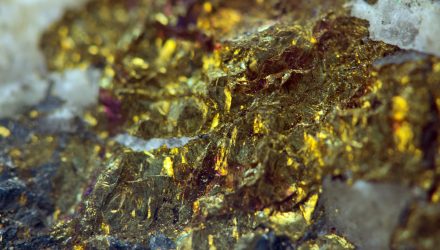Exchange traded fund investors should consider the diversification potential of incorporating the precious metals asset class into an investment portfolio.
In the recent webcast, Precious Metals’ Place in a Portfolio, Stan Kiang, Director of Strategic Accounts, Aberdeen Standard Investments, and Bryan Novak, Senior Managing Director, Astor Investment Management, pointed to several factors that have contributed to the ongoing strength of the precious metals asset.
For starters, many bumps have slowed down the supply chain. Some mines have halted, reducing the supply. Meanwhile, decreased shipping capacity and increased cost have contributed to lower deliveries. Refineries have also experienced a lack of input and suspension of work. Consequently, metal traders and end-users have seen increased costs due to demand and supply disruptions.
The coronavirus-hit gold mining sector saw a slowdown in production over the first half of the year. Recycling activity, an alternative source of supply, was also subdued by market lockdowns, despite pockets of growth.
However, the typical demand dynamic has shifted as well this year. Demand for jewelry and coins, which usually represent 50% of gold demand, also plunged year-over-year, and it is currently at 50% of normal levels. On the other hand, we witnessed record investment demand, notably gold ETF inflows, that more than offset weakness in pandemic-stricken consumer sectors.
Novak argued that precious metals might be more than a tactical play as the asset provides a low correlation to traditional assets, which could act as a good diversifier for a long-term investment portfolio.
“Low/no correlation can also have an impact on portfolio drawdowns,” Novak said.
Kiang also noted that gold exhibited an average annual return of 11% during market drawdowns of more than 10% in the S&P 500 Index since 1987.
“Gold may be an effective risk hedge during major market events,” Kiang said.
Gold has historically provided drawdown risk during major macroeconomic events. FOr example, Kiang pointed out that a 54/36 portfolio with 10% gold exposure fell -26.3% compared to a -32.1% decline in the traditional 60/40 portfolio without gold. Meanwhile, the gold portfolio rose +8.2% this year, compared to the +6.1% gain in a traditional 60/40 portfolio.
As more investors consider including gold into a diversified portfolio, it is also essential to consider the factors that may specifically affect precious metals price moves. For instance, Kiang underscored the continued economic slowdown and need for additional relief packages, low interest rates, negative real rates, weakening U.S. dollar, and Federal Reserve action.
Investors who want to access precious metals may consider several physically-backed metals-related ETFs as a way to diversify a traditional portfolio mix, including the Aberdeen Standard Gold ETF Trust (SGOL). Additionally, the Aberdeen Standard Physical Precious Metals Basket Shares (NYSEArca: GLTR) acts as a catch-all of gold, silver, platinum, and palladium.
The Aberdeen Standard Physical Gold Shares ETF seeks to reflect the performance of the price of gold bullion, less the Trust’s expenses. The Shares are intended to constitute a simple and cost-effective means of investing similar to an investment in gold. An investment in physical gold requires expensive and sometimes complicated arrangements connected with the assay, transportation, warehousing, and insurance of the metal. Although the Shares are not the exact equivalent of an investment in gold, they provide investors with an alternative that allows a level of participation in the gold market through the securities market.
Lastly, the Aberdeen Standard Physical Precious Metals Basket Shares ETF tries to reflect the performance of the price of a basket of gold, silver, platinum, and palladium bullion, less the expenses of the Trust’s operations. The Shares are designed for investors who want a cost-effective and convenient way to invest in physically-backed precious metals.
Financial advisors who are interested in learning more about investing in precious metals can watch the webcast here on demand.
